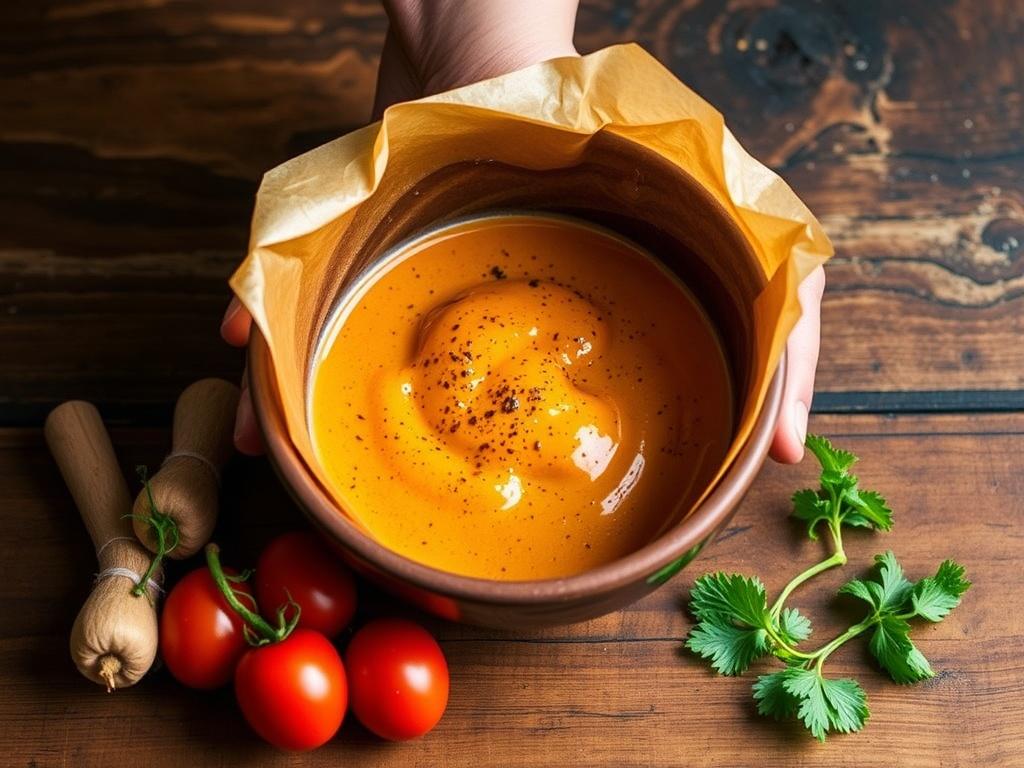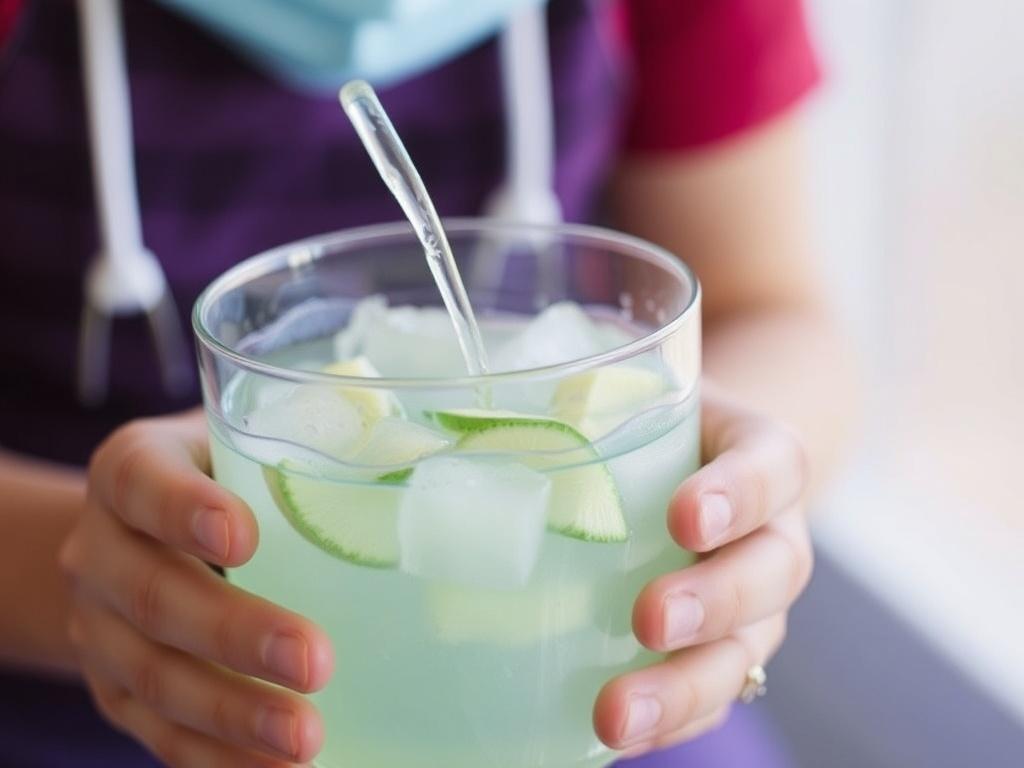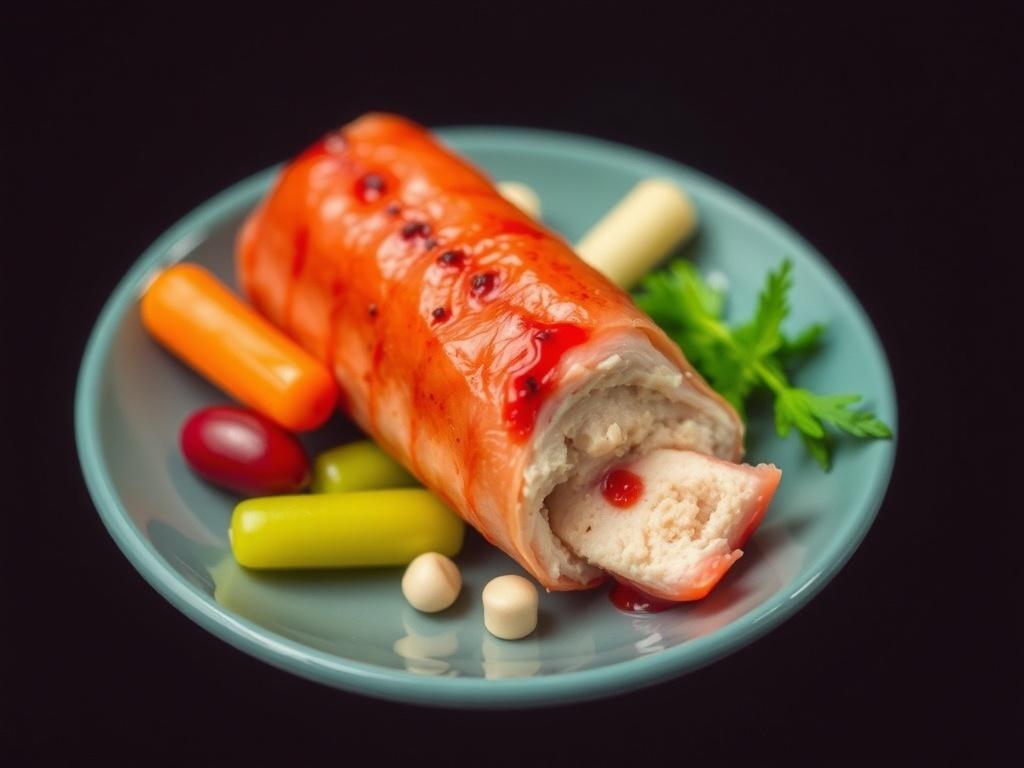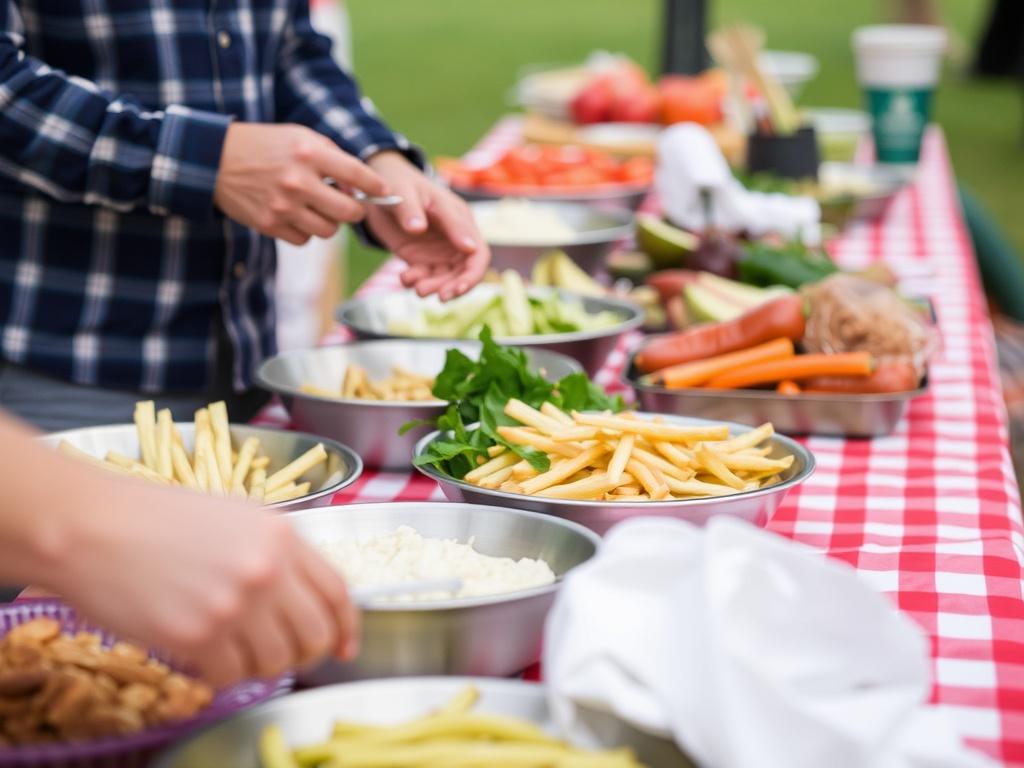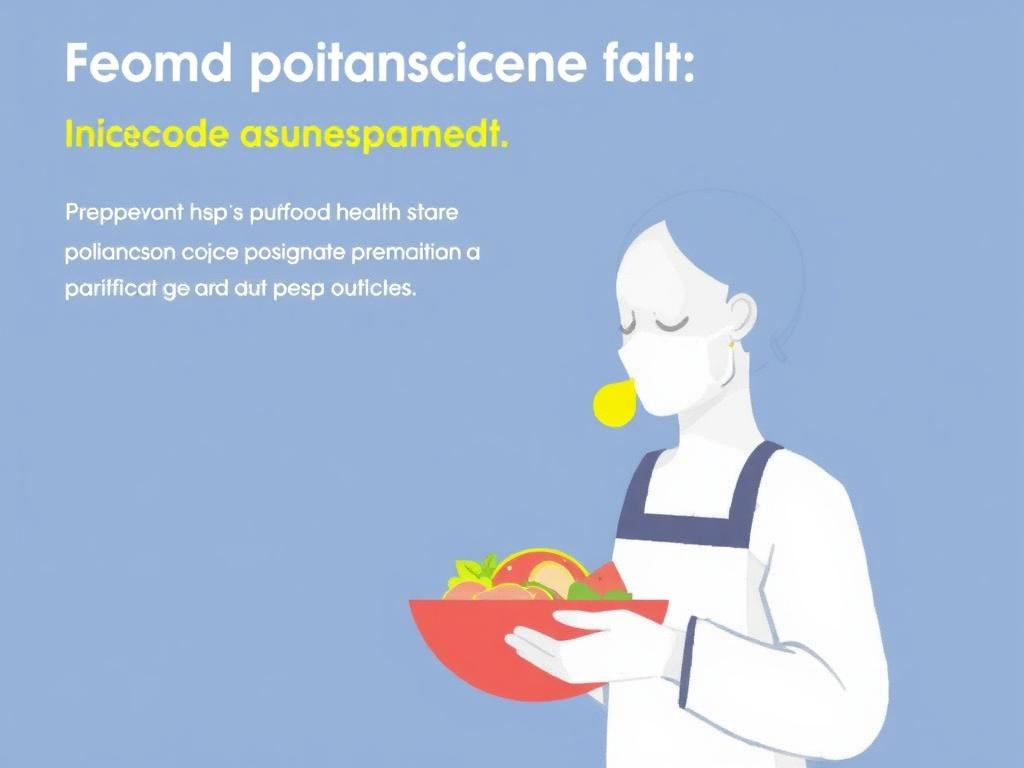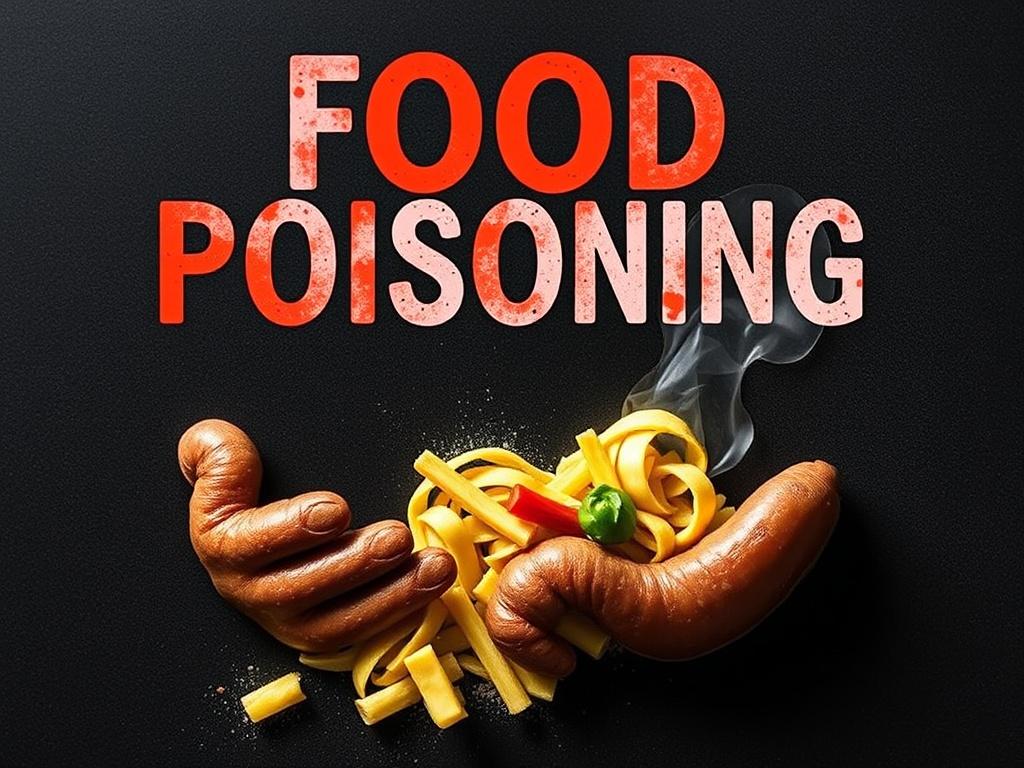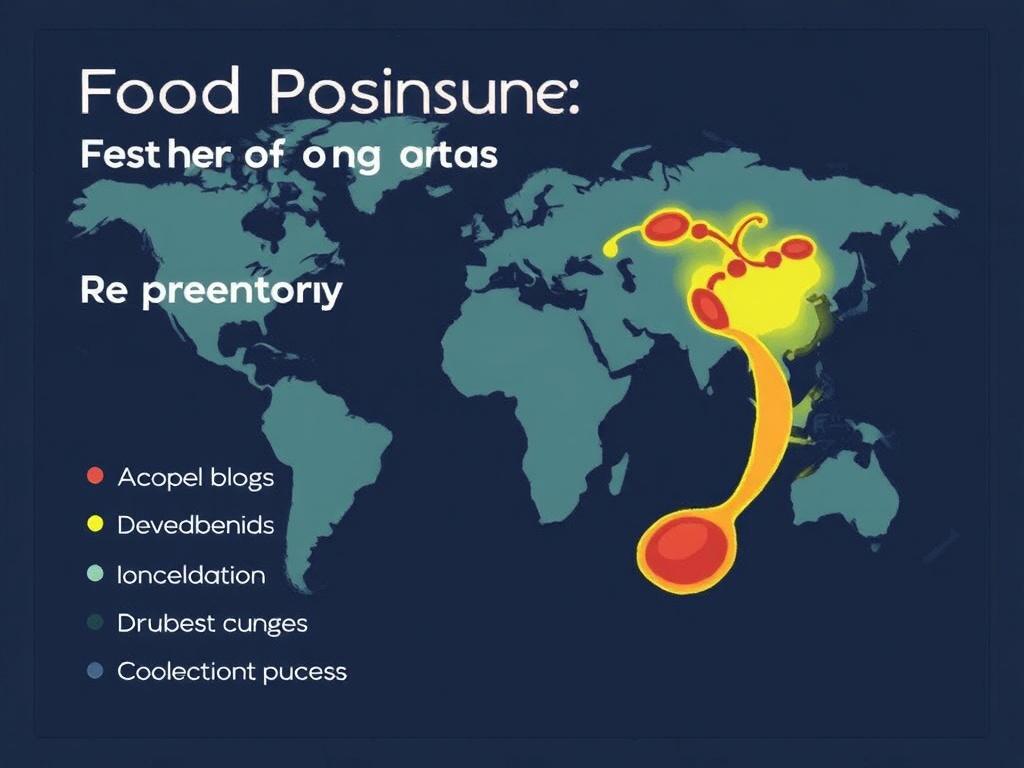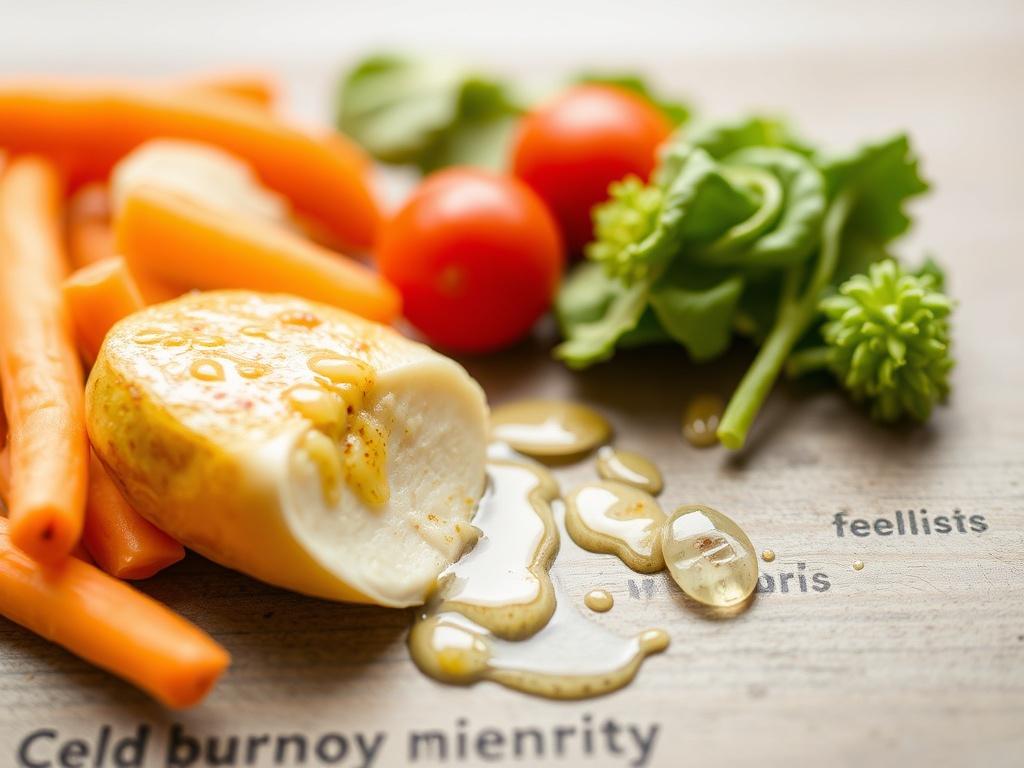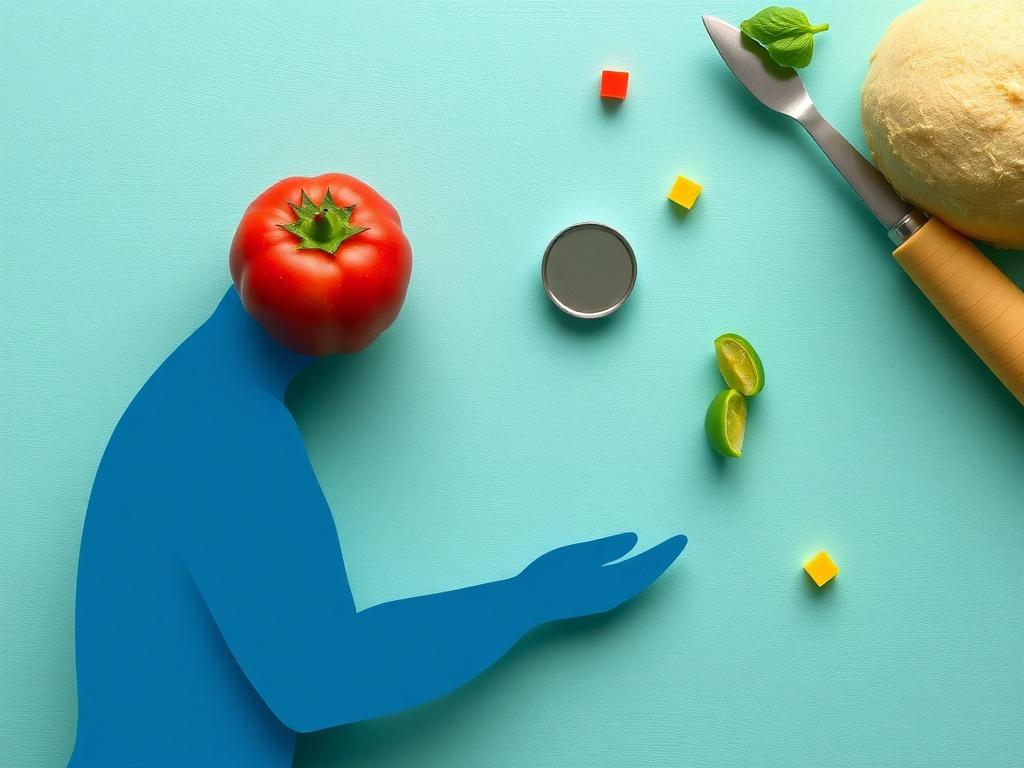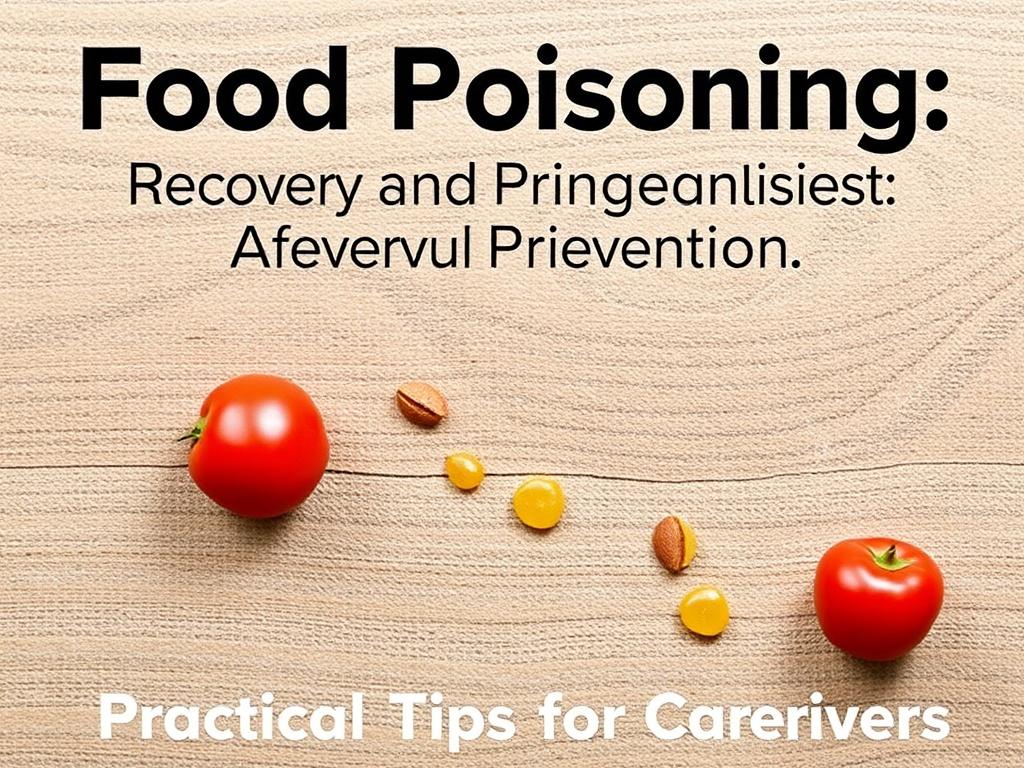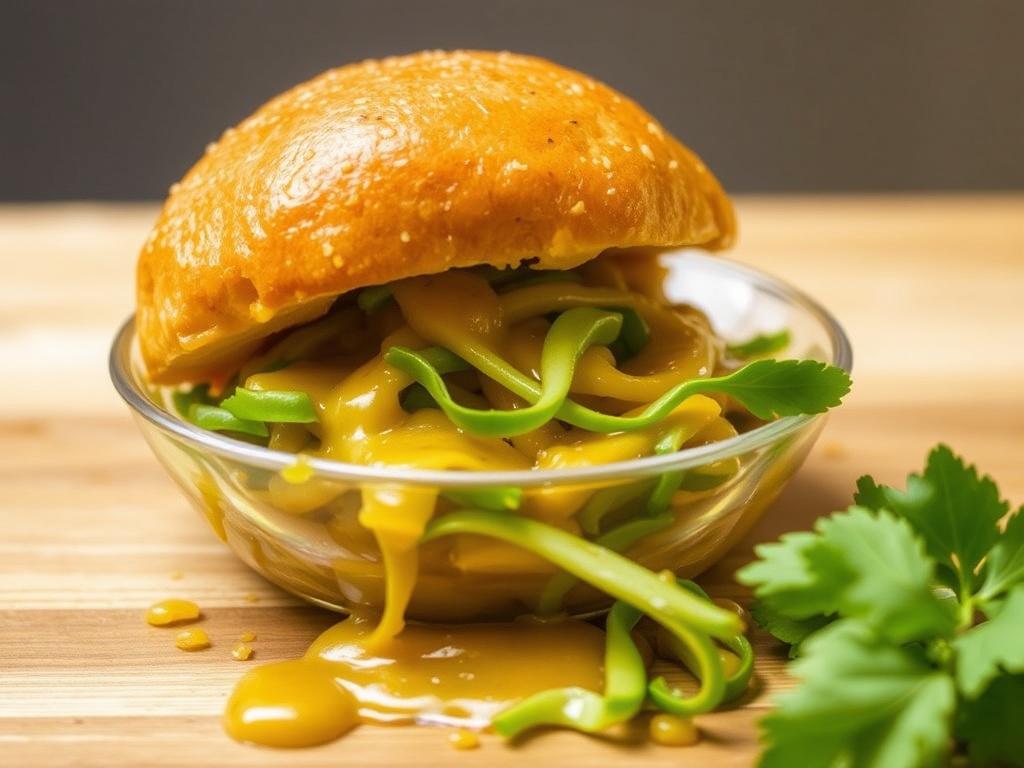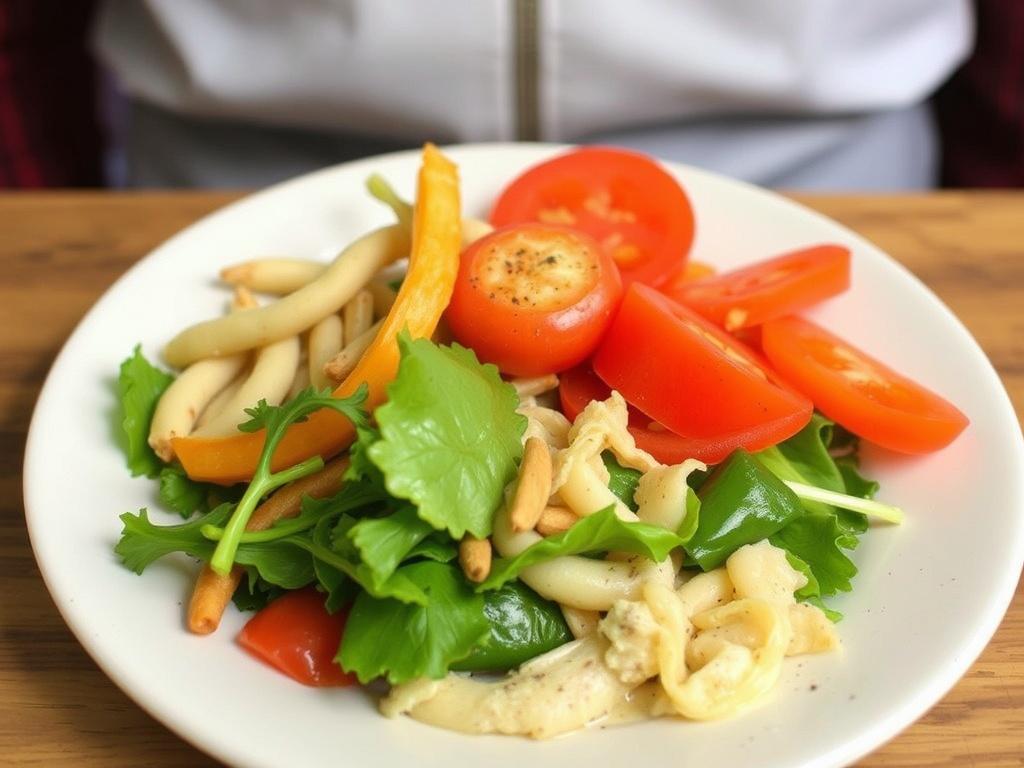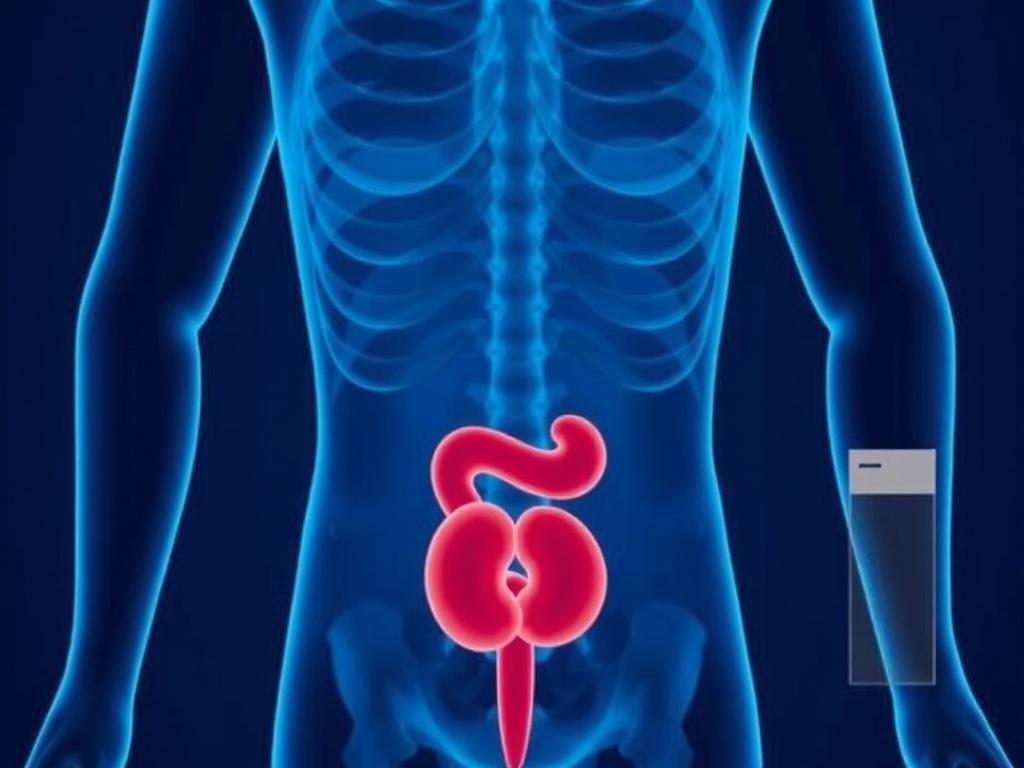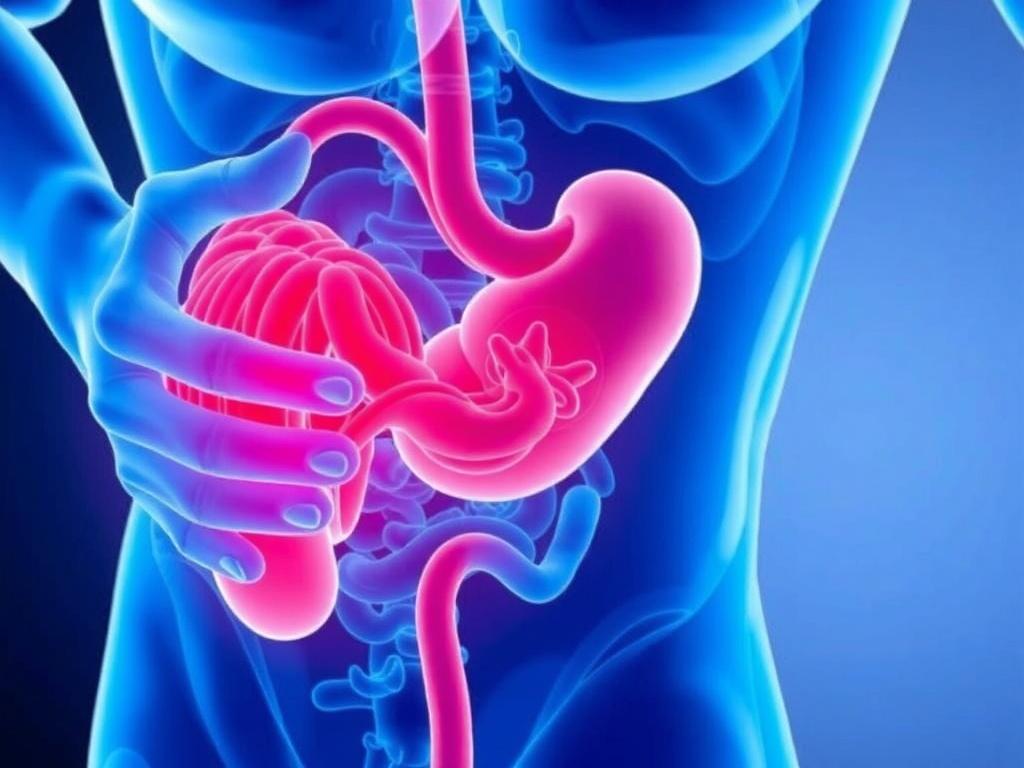Food poisoning can feel like a sudden betrayal by something as ordinary as a sandwich or a salad. One minute you’re fine, and the next you’re doubled over, dizzy, sweating, or racing to the bathroom. It’s a common experience — and an unpleasant one — but the good news is that most people recover fully with simple care at home, and many episodes are preventable with a little knowledge and a few habits. In this article we’ll walk through everything you need to know: what causes food poisoning, how to recognize it, practical steps to recover, when to seek medical help, and simple prevention strategies that protect you, your family, and your guests. The tone here is friendly and conversational because dealing with illness is stressful enough without confusing medical jargon. By the time you finish reading, you’ll have realistic, usable guidance to handle food poisoning and reduce the odds it happens again.
What is food poisoning, really?
Food poisoning — also called foodborne illness — happens when you eat food or drink contaminated with harmful microbes, toxins they produce, or chemical contaminants. The most familiar culprits are bacteria like Salmonella and E. coli, viruses like norovirus, and parasites such as Giardia. Sometimes toxins from bacteria or the environment cause symptoms even if the bacteria are dead; other times the live organism multiplies in the gut and makes you sick. Symptoms can range from mild stomach upset to severe dehydration and organ damage, depending on the cause and the person’s health.
Food poisoning is not a single disease but a collection of different infections and intoxications that produce similar symptoms. Because of that variety, symptoms, timing, and severity vary widely. The same food that only upsets one person might seriously injure someone else, especially if they are very young, elderly, pregnant, or have a weakened immune system.
Common causes and how they contaminate food
Different germs and toxins reach your plate in different ways. Understanding the common pathways of contamination helps make prevention intuitive.
Bacterial culprits
Bacteria like Salmonella, Campylobacter, Listeria, and certain strains of E. coli are frequent causes of foodborne illness. They can come from:
- Undercooked meats, poultry, and eggs
- Unpasteurized milk or dairy products
- Contaminated produce exposed to animal feces or irrigation water
- Cross-contamination from raw foods to ready-to-eat foods
Bacteria can multiply rapidly at temperatures between about 40°F and 140°F (4°C to 60°C), called the “danger zone.” That’s why leaving food out at room temperature for hours is risky.
Viral threats
Norovirus is the most common cause of foodborne illness worldwide and spreads easily via contaminated food, surfaces, and close contact. Unlike many bacteria, viruses don’t grow in food; they hitch a ride. Hepatitis A is another virus that can be transmitted through contaminated food and causes liver inflammation.
Parasites and toxins
Parasites like Giardia and Cryptosporidium are often waterborne, but they can contaminate food through unclean water used in washing or irrigation. Some bacteria — for example, Staphylococcus aureus — produce toxins in food that make you sick rapidly, sometimes within hours. Certain fish and shellfish can accumulate toxins, leading to severe reactions not treatable with antibiotics.
What to expect: symptoms and typical timelines
Food poisoning has a characteristic cluster of symptoms that can be alarming but are usually the body’s way of clearing the invader.
- Nausea and vomiting
- Diarrhea (sometimes bloody)
- Abdominal pain and cramping
- Fever or chills
- Headache, muscle aches, or fatigue
- Dehydration (dry mouth, dark urine, dizziness)
The incubation period — time from exposure to symptoms — varies by pathogen. Some toxins cause symptoms within a few hours, while others take days or even weeks. Severity depends on the organism, the amount consumed, and the person’s health.
Typical timelines at a glance
| Pathogen or cause | Typical incubation | Common symptoms | Typical duration |
|---|---|---|---|
| Staphylococcus aureus toxin | 1–6 hours | Sudden nausea, vomiting, stomach cramps | Less than 24 hours |
| Bacillus cereus (toxin) | 1–6 hours (emetic form) or 8–16 hours (diarrheal) | Vomiting or diarrhea | 24 hours or less |
| Norovirus | 12–48 hours | Vomiting, watery diarrhea, stomach cramps, low-grade fever | 1–3 days |
| Salmonella | 6–72 hours | Diarrhea, fever, stomach cramps | 4–7 days |
| Campylobacter | 2–5 days | Diarrhea (sometimes bloody), cramping, fever | 1 week or more |
| Shiga toxin-producing E. coli (STEC) | 1–10 days | Severe stomach cramps, bloody diarrhea, vomiting | 5–10 days, complications possible |
| Listeria | 1–4 weeks (can be longer) | Fever, muscle aches, sometimes gastrointestinal symptoms; severe in pregnant people and newborns | Varies; can be severe |
Diagnosing food poisoning: when tests help
Most cases are diagnosed based on symptoms and recent food history. If symptoms are mild and improving within a few days, no tests are usually needed. However, seek medical care and testing if any of the following apply:
- Severe symptoms: high fever, bloody diarrhea, frequent vomiting that prevents hydration
- Symptoms lasting more than a few days, or worsening
- Vulnerable individuals: infants, older adults, pregnant people, or those with weakened immune systems
- Suspected outbreak (multiple people affected from the same source)
A clinician may order stool tests to identify the pathogen or blood tests to check for dehydration and organ function. Identifying the cause matters when antibiotics or other specific treatments are needed, or when public health action is necessary to prevent more cases.
First steps at home: immediate care that helps
When food poisoning strikes, the first priority is preventing dehydration and supporting your body while it clears the infection. Here’s a simple, practical approach.
1. Stop eating problematic foods
If you suspect a specific food, stop consuming it and throw away any leftovers that might still be contaminated. Don’t blame yourself — lots of foodborne exposures are invisible and not due to obvious neglect.
2. Hydrate steadily
Hydration is the single most important home treatment. Vomiting and diarrhea cause fluid and electrolyte loss, which can progress quickly to dehydration. Sip clear fluids like water, broths, or oral rehydration solutions (ORS). Avoid alcohol, caffeine, and sugary drinks that can worsen diarrhea.
3. Rest and gentle diet
Let your stomach settle. Rest, avoid strenuous activity, and when you feel ready, return to bland foods slowly — think toast, rice, bananas, applesauce, and plain crackers. Don’t force solid food too soon if you’re still nauseated.
4. Anti-nausea and anti-diarrheal medicines
Over-the-counter anti-diarrheal medicines (e.g., loperamide) can reduce symptoms for many people, but use caution. Don’t use these if you have high fever or bloody diarrhea, as slowing gut transit may prolong infection. Anti-nausea medications can help you keep fluids down. If you’re unsure, check with a healthcare provider before taking medicines, especially for children.
5. Watch for warning signs
Keep an eye out for signs that require urgent care: inability to keep any fluids down, severe abdominal pain, persistent high fever, bloody diarrhea, signs of dehydration (very decreased urine output, extreme thirst, dizziness), or any neurologic symptoms like blurred vision or weakness.
Oral rehydration solutions: why they matter and how to make them
ORS are simple, inexpensive, and lifesaving in moderate to severe dehydration. They replace lost fluid, glucose, and electrolytes in a balanced way that the gut can absorb even when you’re ill.
Homemade ORS recipe
| Ingredient | Amount | Instructions |
|---|---|---|
| Clean water | 1 liter (about 4.25 cups) | Use boiled and cooled water if water safety is uncertain |
| Table salt | Half a teaspoon (about 2.5 grams) | Measure carefully — too much salt is harmful |
| Sugar | 6 teaspoons (about 30 grams) | Plain sugar is fine; don’t substitute honey for infants under 1 year |
Stir until dissolved and sip frequently. Commercial ORS products are available and often recommended because they have the precise balance of electrolytes.
When antibiotics or medical treatment are needed
Most food poisoning cases are viral or self-limited bacterial infections that do not require antibiotics. However, there are important exceptions:
- Severe Campylobacter or Salmonella infections in vulnerable patients may need antibiotics.
- Shigella and some strains of E. coli may be treated with specific antibiotics based on susceptibility.
- Listeria infections require prompt antibiotic treatment, especially in pregnancy or infants.
Never self-prescribe antibiotics for food poisoning. Misuse can worsen things by promoting resistance or causing complications. A healthcare provider will determine if antibiotics, IV fluids, or hospitalization are necessary.
Special populations: tailored advice
While the basic principles of care apply to everyone, some groups need extra caution.
Infants and young children
Children dehydrate faster than adults. If a baby or young child has vomiting, diarrhea, reduced urine output, or unusual sleepiness, seek medical care quickly. Do not give plain water to infants under 6 months — continue breastfeeding or formula and use ORS as recommended by a clinician.
Older adults
Older adults often have weaker immune responses and may take medications that increase risk. Even mild symptoms can progress rapidly. Encourage hydration and get medical assessment early.
Pregnant people
Pregnancy changes the immune system and certain infections (like Listeria) can harm the fetus. Pregnant people with fever, severe symptoms, or suspicious exposures should contact their healthcare provider promptly.
People with chronic illnesses or weakened immunity
Those with diabetes, kidney disease, or on immune-suppressing medications are at higher risk for complications. Early evaluation and treatment can prevent hospital admission.
Prevention: simple habits that protect you and your family
Most foodborne illness is preventable. The following habits reduce risk dramatically.
Safe shopping and storage
- Buy refrigerated and frozen foods last; transport them home in a cooler if the store is far.
- Store perishables promptly: refrigerate at 40°F/4°C or below, freeze at 0°F/-18°C or below.
- Use a food thermometer to know when food reaches a safe internal temperature.
Clean, separate, cook, and chill — the four pillars
- Clean: Wash hands and surfaces often. Rinse produce under running water.
- Separate: Keep raw meats away from ready-to-eat foods. Use separate cutting boards.
- Cook: Use proper temperatures — poultry to 165°F (74°C), ground meats to 160°F (71°C), fish to 145°F (63°C).
- Chill: Refrigerate leftovers within 2 hours (1 hour when above 90°F/32°C). Reheat to at least 165°F (74°C).
Dining out and travel tips
When eating away from home or traveling:
- Choose busy, reputable establishments with high turnover — fresh food is generally safer.
- Avoid raw or undercooked items when in doubt, especially shellfish or street food prepared in questionable conditions.
- When traveling to areas with uncertain water safety, avoid tap water, ice, and raw produce washed in local water; drink bottled or treated water.
Special precautions for high-risk foods
- Raw milk and unpasteurized cheeses carry risk — choose pasteurized dairy products.
- Raw shellfish may concentrate toxins and bacteria — cook thoroughly or avoid raw shellfish.
- Leftover rice can harbor Bacillus cereus spores — refrigerate promptly and reheat thoroughly, or discard after one day.
Preventing cross-contamination at home
Cross-contamination is a stealthy way germs move from raw food to the rest of your meal. A few habits minimize this risk:
- Use color-coded cutting boards for raw meat and produce.
- Never put cooked food back on a plate that held raw meat unless it has been thoroughly cleaned.
- Wash hands for at least 20 seconds after handling raw foods or touching kitchen surfaces.
- Keep dishcloths and sponges clean and replace them often — they are breeding grounds for bacteria.
Food safety during large gatherings and picnics
Parties, potlucks, and picnics are frequent sites of foodborne outbreaks because food sits out and temperatures vary. To keep guests safe:
- Keep hot foods hot (above 140°F/60°C) and cold foods cold (below 40°F/4°C).
- Use ice packs or insulated containers for salads and dairy-rich dishes.
- Serve perishable items in smaller batches and replenish from refrigeration rather than leaving everything out.
- Label dishes with common allergens and ingredients if many people are contributing.
When an outbreak happens: public health steps
If multiple people become ill after eating the same food, public health authorities may investigate to identify the source and prevent additional cases. Reporting suspected outbreaks helps stop contaminated products from reaching others. If you believe a restaurant, store, or manufacturer caused your illness, consider contacting your local health department — they can guide testing and recall efforts.
Common myths and misconceptions
There are many myths about food poisoning that lead to poor decisions. Let’s debunk a few:
- Myth: “If food smells fine, it’s safe.” Reality: Many dangerous pathogens don’t change the smell, taste, or appearance of food.
- Myth: “Heating leftovers once makes them safe forever.” Reality: Repeated reheating and long storage can allow toxins to form and bacteria to survive if temperatures were not correct.
- Myth: “Alcohol or spicy food kills pathogens.” Reality: These may alter taste but won’t reliably kill bacteria or viruses in contaminated food.
Long-term complications to be aware of
While most people recover fully, some infections can lead to complications:
- Post-infectious irritable bowel syndrome (IBS) — persistent digestive symptoms after the infection clears.
- Hemolytic uremic syndrome (HUS) — a rare but serious complication after certain E. coli infections, causing kidney failure, especially in children.
- Reactive arthritis — joint pain and inflammation can follow infections like Salmonella or Campylobacter.
- Neurologic and other systemic effects — rare but reported with certain toxins and infections.
If symptoms persist for weeks or new symptoms arise, follow up with your clinician.
Practical recovery plan you can use
Here is a step-by-step checklist to guide recovery at home:
- Stop eating the suspect food and discard leftovers.
- Start sipping ORS or clear fluids immediately; take small sips if vomiting.
- Rest and avoid heavy physical activity.
- When nausea subsides, introduce bland foods gradually: crackers, toast, rice, bananas.
- Monitor urine output, dizziness, and mental alertness for dehydration.
- Avoid anti-diarrheal drugs if you have high fever or bloody stools unless advised by a provider.
- Contact a healthcare provider if severe symptoms or risk factors are present.
- Keep a note of everything you ate in the 48 hours before symptoms for possible reporting.
Foods and behaviors that deserve special caution
Some items and habits raise your risk much more than others:
- Undercooked poultry, eggs, or pork
- Raw or undercooked shellfish and sushi
- Unpasteurized milk and soft cheeses
- Buffets and foods left out at parties for hours
- Poor hand hygiene in food preparation
Useful resources and when to seek help
If in doubt, your primary care provider is a good first contact. Local health departments handle outbreaks and food safety complaints. Reliable online resources include government public health sites and major medical centers, but use them to supplement, not replace, personalized medical advice if you’re seriously ill.
Warning signs that require immediate medical attention
Seek emergency care or call your healthcare provider immediately if you experience:
- Severe dehydration (lightheadedness, fainting, very decreased urine output)
- Confusion, difficulty awakening, or seizures
- Bloody diarrhea or persistent high fever
- Signs of sepsis: very fast heartbeat, rapid breathing, very low blood pressure
- New neurologic symptoms like blurred vision or muscle weakness
Practical tips for caregivers
If you’re caring for someone with food poisoning:
- Encourage small, frequent sips of ORS; keep a cup nearby at all times.
- Offer rest and a quiet environment; disruptions can worsen dizziness and nausea.
- Monitor output: note frequency of vomiting and diarrhea and the volume of urine.
- Know when to call for help: if the person cannot hold down fluids, shows confusion, has bloody stools, or appears very weak.
Checklist: kitchen safety basics
| Action | Why it matters |
|---|---|
| Wash hands with soap and water before cooking and after handling raw food | Prevents transferring bacteria and viruses to food and surfaces |
| Use a thermometer to check meat doneness | Visual cues aren’t reliable; thermometer ensures safe internal temperature |
| Refrigerate leftovers within 2 hours | Limits bacterial growth that occurs at room temperature |
| Thaw frozen food safely (refrigerator, cold water, or microwave) | Prevents partial warming that enables bacterial growth |
| Clean kitchen sponges and towels frequently | They can harbor bacteria and spread contamination |
Realistic expectations: recovery timeline
Most cases improve within a few days with proper fluid replacement and rest. Viruses like norovirus typically resolve in 1–3 days. Bacterial infections might take longer, and specific therapy can shorten or complicate recovery depending on the pathogen. Listen to your body; don’t rush back to normal activity until you feel well and hydrated. Returning to work or school too soon risks spreading viral causes like norovirus to others.
Final practical scenarios and what to do
Scenario 1: You ate at a friend’s house and developed vomiting within a few hours. It’s likely a toxin — rest, hydrate, and recover at home. If symptoms resolve quickly, no more action is needed. If others are sick, tell your friend so they can check food handling.
Scenario 2: You have bloody diarrhea and severe cramps a day after eating undercooked burger. Seek medical evaluation; this could be E. coli and needs careful management.
Scenario 3: You’re pregnant and ate soft cheese at a party; later you feel feverish. Call your provider. Listeria is rare but serious during pregnancy and often requires testing and treatment even before severe symptoms develop.
Scenario 4: You’re traveling and suspect water contamination. Focus on safe drinking options, ORS for hydration, and seek local medical care if symptoms are severe.
Surviving and learning from a bout of food poisoning
We all make food choices hundreds of times each week, and most of the time nothing goes wrong. When food poisoning happens, it’s an opportunity to learn rather than to panic. Making small changes — using a thermometer, chilling leftovers quickly, washing hands and produce — dramatically reduces your risk. If multiple people are affected by the same meal, reporting the event helps protect others.
Conclusion
Food poisoning is a common but usually manageable illness; with prompt hydration, rest, and sensible care most people recover quickly. Know the signs that require medical attention, pay special attention to infants, older adults, pregnant people and those with weakened immune systems, and adopt simple food-safety habits at home and when traveling to prevent future episodes. By treating symptoms appropriately, staying hydrated, and using common-sense kitchen practices, you can recover faster and keep your household safer.


